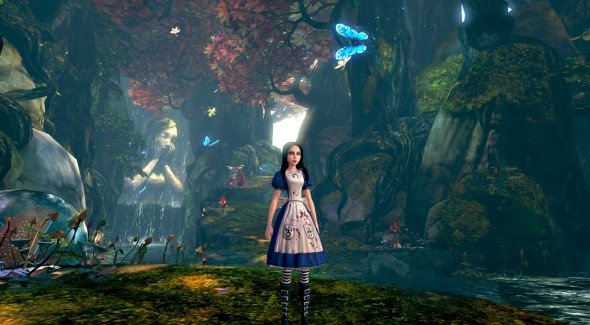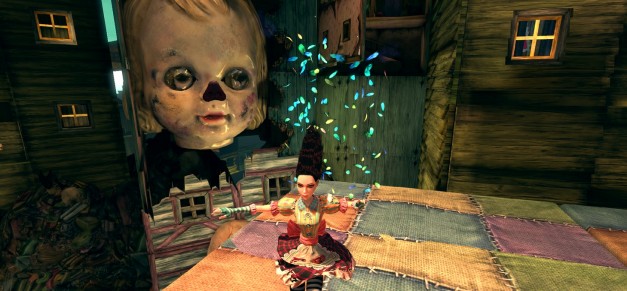Our Verdict
Despite unrefined combat, Alice: Madness Returns delivers a fun, unforgettable journey in color, design, and images.
PC Gamer's got your back
Lewis Carroll's Alice's Adventures in Wonderland is a novel in which anything might happen. Alice: Madness Returns is a sumptuous but mechanically simple third-person action game in which just about everything does.
Set more than a decade after her adventure in American McGee's Alice, Alice: Madness Returns finds the titular heroine receiving psychiatric care in a depressing Victorian orphanage, so it's no wonder that she'd decide to duck out of grim reality and return to the Wonderland that she fought to restore to verdant beauty as a girl. But when a gooey black “ruin” begins coughing up baby-faced monsters, Alice's refuge turns into a series of phantasmagoric prisons that she must traverse to find its source—in her own fragile psyche.

And she does so with aplomb. Alice whips out her Vorpal Blade and tears into her foes with a rapid series of bloody slashes that gracefully drop into slo-mo for an instant after every combo. The result is some gorgeous combat, but despite the addition of a few more novel, vaguely upgradable weapons and a fantastic dodge maneuver that whisks Alice out of harm's way in a burst of blue butterflies, it's not particularly rewarding—especially in the second half of the game, where it becomes apparent that new enemies are so much like the old enemies.
Wandering Wonderland
Fortunately, Madness Returns doesn't rely on its wind-up, clockwork combat or its vast catalog of collectibles to sustain our interest through its 12-plus hours. Instead, its strong-est feature is its extravagant, vision-ary art direction, which gleefully loots not only the sinister underpinnings of Carroll's novel but everything from twelfth-century Japan to the grotty visions of the Brothers Quay as Wonderland's six sprawling domains gradually descend from whimsical dreamscapes into horrifying nightmares. Within them, Alice breezily walks into paintings that transform the game into a delicate-looking 2D platformer. She restores an underwater theatrical production resembling Pirates of the Caribbean crossed with Glee. She rides teacup trolleys, fires a pepper-loaded minigun, collects the body parts of her friends, and mercilessly, furiously stomps tiny card-soldiers under the soles of her boots.

But even in its darkest moments, Madness Returns plays enjoyably with magical grace and beauty—even Alice's spirited pirouettes from one platform to another shed blue and teal leaves. This is the real triumph of Madness Returns: you could blot out the game's dialog and narrative, and the demented sets and gorgeous visuals would tell a mesmerizing story on their own.
Despite unrefined combat, Alice: Madness Returns delivers a fun, unforgettable journey in color, design, and images.


